Can we all think for a moment about the climate activists and environmentalists? On June 1, they watched the president of the United States stand in the Rose Garden and announce his intention to withdraw from the Paris climate accord, the historic 2015 agreement by 195 countries to reduce greenhouse gas emissions. Along with the prospect of an increase in global temperatures, you could almost see the federal research dollars evaporating. “It was a somber day,” says Elizabeth Burakowski ’03, a researcher at the Institute for the Study of Earth, Oceans, and Space at the University of New Hampshire. “But of course, it doesn’t mean we’ll stop moving forward.”
This outlook seems to be a hallmark of the profession. Liz Ogbu ’98, a social innovator and designer, says she has been drawing heavily in these last few months on a line attributed to Desmond Tutu: “I’m not an optimist, I’m a prisoner of hope,” he said. “I still see tremendous resilience, so I keep doing my work to set up the conditions where that can be achieved,” Ogbu says.
She and Burakowski are two among many in the alumnae body who are working in fields related to environmentalism, or “sustainability” writ large. We cast a wide net and found a wider array of ways in which alums are contributing to the effort: from advocacy and activism, agriculture, art, architecture, design, education, entrepreneurship, and journalism, to research and policy, just for starters. While some have been at it for decades, their numbers tend to increase in the younger alumnae classes—perhaps not surprising for the generation that stands to be most affected by a warming planet. On the whole, these are individuals who find hope in action, whose continued efforts aim to gently tilt our planet toward a slightly cooler future.
Elizabeth Burakowski ’03
Research Assistant Professor
Institute for the Study of Earth, Oceans, and Space
University of New Hampshire
Durham, N.H.
Elizabeth Burakowski was 7 the year her family moved from the flats of Illinois to New Hampshire, but she has no trouble remembering the winter day when they all packed into the car for their first family ski trip. Her mom shelled out $20 for Burakowski’s equipment at a ski swap, plus $10 for the lift ticket; the rest of what transpired is priceless. Burakowski remembers the thrill of riding a J-bar up the mountain, then flinging herself down in a full-on snowplow, arms spread as wide as the sky.
From that day forward, Burakowski spent as many days on skis as she could. As a geology major at Wellesley, she would keep tabs on the snow reports up north, ever hopeful for a weekend escape. Some winters were plain bleak, including a Christmas Day that clocked in at 60-odd degrees. “It felt wrong,” she says. “That’s really what got me started in the study of climate change: seeing the effects of it in my own life.”
Burakowski started with a master’s degree in 2007. Her research tracked snowfall and snowcover records in the Northeast from the mid-1960s onward, which demonstrated a significant warming trend. “It was enough to identify winter as warming faster than any other season in the Northeast,” she says. She followed that up with doctoral dissertation examining how New England’s deforestation in the mid-1800s may have affected the climate. She looked specifically at a measure of reflectivity called albedo: A bright, snow-covered surface reflects much of the sun’s energy, whereas dark, forested areas absorb more energy and warm the landscape. Settlers in 1850 New England, who had cleared the land, experienced winters colder than ours, she concluded (also, better ski conditions).
During this time, she participated in another study that “gathered much more attention than my dissertation ever would,” she says. It examined the economic impact of warming temperatures on the winter tourism economy in the United States, a $12.2 billion industry. In the small towns of northern New Hampshire, for example, where local economies rely on ice fishing, skiing, or snowmobiling, a 65-degree Christmas Day is going to melt hopes. “People weren’t really interested in most of what I had to say, until I started saying that thousands of jobs would be lost in New Hampshire,” says Burakowski, who had been talking up climate change with members of Congress at that time. “That’s a huge reason for action. But there’s also a lot of value in our ecosystems that doesn’t necessarily result in the exchange of currency, and that tends to be overlooked.”
As a research assistant professor at UNH, Burakowski says decreases in federal funding will have a serious impact on our understanding of changing climate. She can’t help but think about her 3-year-old son, a snowman superfan. Current climate projections estimate an increase in winter temperatures of 8 to 12 degrees Fahrenheit by the end of the century.“When he’s in his 80s, will he still have a white winter in New Hampshire to share with his grandkids? It’s a distinct possibility that he won’t,” Burakowski says. “But if we continue along a trajectory of reducing carbon emissions instead of increasing them, we can slow this train down.”
That brand of optimism fuels her return to the office every day. (Well, that and a bus, with a 15-minute walk to/from her son’s day care—part of her efforts to reduce her own carbon footprint.) She believes that “science will persevere, and scientists will persist, if anything with more resolve.” She points to promising leadership at the state level, actions in other countries, and the students in her Intro to Climate course, whose “hope and optimism are contagious,” she says.
Jae Rhim Lee ’98
Founder and CEO, Coeio
Atlanta and Austin
Most of us probably prefer not to think about death until forced to, and Jae Rhim Lee would say that’s a symptom of our culture of death denial. “We deny that we are made of this earth and return to the earth,” she says. That denial lies at the psychological root of many of our environmental problems, like climate change, and the behaviors that enable them, she says. And now our bodies are warehousing the pollutants we’ve introduced to the planet. The Centers for Disease Control have identified more than 200 environmental toxins present in our bodies, from preservatives and BPA to pesticides and heavy metals like mercury and lead. In response, Lee offers what she calls a modest proposal: Let your last act on Earth be an offering to it.
Enter the Infinity Burial Suit, a biodegradable garment infused with mushrooms and other microorganisms that speed the body’s decomposition and return organic nutrients to the earth. The idea is simple. In death, the body is dressed in the garment and buried directly in the soil. And since mushrooms are nature’s master decomposers, Lee says, they can render metals and toxins present in our bodies innocuous through a process called mycoremediation.
The suit, one of several products on offer by Coeio, of which Lee is CEO and founder, represents a “meaningful and beautiful” return to the earth, she says, as well as a step toward accepting death. “It means taking full responsibility for all the resources we’ve used, the damage we’ve done, all the ways in which we’ve polluted over our lifetimes.”
Consider the alternatives. For a typical burial, the body is pumped with a cocktail of formaldehyde, a known carcinogen and hazardous air pollutant. (Embalmers face increased risk of contracting leukemia and ALS or other autoimmune diseases, according to the Green Burial Council.) Then the body is then sealed in a casket, which is in turn placed in a concrete or plastic liner and buried six feet deep. “The body is enclosed in a tomb, completely isolated from the earth,” Lee says. Cremation, on the other hand, releases any metals present in the body (like mercury fillings) into the atmosphere and consumes coal or natural gas in the process. “Our practices for handling the dead are negatively affecting the living,” Lee says.
Green burials—where bodies are placed in biodegradable coffins or shrouds, minus the embalming and cement liners—represent a step in the right direction, she says, but they don’t address the toxins we’ve accumulated in our bodies.
Lee wore an early prototype of her mushroom burial suit onstage when she introduced the idea in a 2011 TED Talk; it was originally conceived as an artistic provocation. Of the 1.4 million viewers, responses fell everywhere on the continuum between death acceptance (“Where can I get one?”) to denial (“I hope the mushrooms eat you”).
Dennis White, of Woburn, Mass., was suffering from a terminal neurodegenerative disease when he saw Lee’s TED Talk and contacted her in 2015. He quoted Neil deGrasse Tyson’s wish “that my body in death be buried not cremated, so that the energy content contained within it gets returned to the earth, so that flora and fauna can dine upon it, just as I have dined upon flora and fauna during my lifetime.” In a process documented by a film called Suiting Dennis, Lee worked with White’s family to grant his wish to be buried in the suit.
Coeio and its products represent a culmination of Lee’s work at the intersection of art, science, and culture: She earned a B.A. in psychology at Wellesley and a master of science in visual studies at MIT. “I’ve come to have many thoughts about all of this,” she says, including the notion that pointing fingers will never inspire people to change their behaviors. “The alternative is to paint a beautiful picture of what this could look like, of our returning to the earth, rejoining the trees, the rocks, the salt, and the sand.” Dust to dust.

Liza Bemis ’03
Retail and Business Manager,
Hutchins Farm
Concord, Mass.
Liza Bemis’s commute ends each morning at Hutchins Farm in Concord, Mass. Marked by a modest hand-painted sign, the driveway takes a hairpin turn that unwinds on a 63-acre panorama of fields and orchards spilling southeasterly down to the banks of the Concord River. Bemis’s family has been farming the land since 1895; she returned full-time in 2011 to manage the retail operations. Her tenure represents a blip in time for land that’s been designated farmland on maps as far back as 1775—the year the Minutemen mustered across the street on Punkatasset Hill, waiting for the British. Native Americans had likely been working the land long before that. That kind of history forces a long view: “This land isn’t mine or even ours, we happen to be making decisions for it right now,” Bemis says.
Hutchins grows produce for sale at its farm stand and farmers markets, and for a few restaurants. Bemis’s father and uncle sought organic certification in the 1980s, early days in the organic movement. The farming community was skeptical. “They thought my father was crazy for trying to grow without synthetic fertilizers,” Bemis says. Then one day, a well-respected farmer was caught stealing their sweet peppers. He apologized and sheepishly explained that his own wife preferred theirs. “Must’ve been all that manure we were using,” Bemis says.
From a consumer standpoint, organic certification bolsters trust. When customers visit the farm stand, perched on the hill above the main fields, they have a full view of the crew, their tools, the labor, the food. Organic certification, with its third-party verification, backs that up with accountability and transparency. “It gives consumers more faith that we are doing what we say we are,” Bemis says.
Beyond that, Bemis says organic standards provide her family reassurance about their stewardship of the land. “Farming is not a closed system,” she says. “We can so quickly see the effects of our work on the land and the environment—the birds, coyotes, deer, all the insects, trees, and systems are impacted by our farming choices.” One example is the Blanding’s turtle, an endangered species with whom they share land. Hutchins’ crew plants their nesting area with a variety of grasses, both to improve the turtles’ habitat and hopefully keep them out of the row crops. “It mostly works, although occasionally a turtle will lay something right in our row,” Bemis says. “But it illustrates the idea that we are sharing this land, and while we need to grow food from it, we can also be mindful about how that impacts the surrounding environment.”
Farming is ripe with this kind of complication. Puzzling through endless technical challenges or figuring out how to respond to a changing climate keep the job interesting for Bemis. She dabbled in desk jobs after college but withered in fluorescent office life. She earned a master’s in the Agriculture, Food, and Environment Program at the Tufts Friedman School of Nutrition Science and Policy. It opened her eyes to a host of problems around climate, food, and social justice, ultimately compelling her to return to the family farm, to be the link between those ideas and this land.
On some days, Bemis says her work “couldn’t be farther from the AFE program—I’m growing food for rich people who can afford it,” she admits. On the other hand, she has “an opportunity to talk about agriculture with every single person who walks through our doors.” The local food movement may be maligned these days as elitist, she says, but the real value is in the opportunities for education. “I have had countless conversations with customers, employees, and even reporters about what organic agriculture really means (and what it doesn’t) and how our government can harm or improve agriculture systems in this country, and globally. It’s a jumping-off point to conversations about the food system in this country.”
Hoi-Fei Mok ’10
Program officer, ICLEI; artist
San Leandro, Calif.
Hoi-Fei Mok is a self-described environmentalist, social-justice activist, and artist whose work is so varied it makes for a rather long list: from paint and pencil to poetry and collage, and one street-corner public-utility box (so far). Mok was one of several artists recently selected by the California city of San Leandro to transform the exterior of a utility box into a work of public art. Mok’s box displays a smattering of bees inside a honeycomb pattern in an earthy palette of browns, blues, greens, and gold. One side warns: “You’ll miss me when I’m gone.” The other side says, “Because we’re in this together.” The explicit message here addresses the decline in bee populations and our interconnectedness with their fate, of course. But the spirit of the project touches on all the intersections of Mok’s varied body of work: anchored in environmental science, with roots in the community, and drawing on the power of art to inspire and challenge us.
By day, Mok, who uses the pronouns they/them/theirs, works as a program officer at ICLEI, a nonprofit that supports cities, towns, and regions trying to implement climate action plans. Mok joined the organization in February, when it was already apparent that state and local governments would need to be in a position to step up with critical leadership in climate action. Mok’s role is primarily providing technical assistance, for example, helping member cities understand their emissions inventory, helping develop climate action plans, or collecting data on energy use. It’s hands-on community work, something they missed earlier on in academia: After a B.A. in biochemistry, Mok earned a Ph.D. at the University of Melbourne in 2014 in environmental science.
Not long after completing the doctorate program, Mok signed on as a fellow in the CivicSparks AmeriCorps program, where fellows work in tandem with a California community to implement sustainability efforts. Mok spent a year in the environmental trenches for the city of Emeryville, incentivizing alternative transportation and helping develop the city’s climate action plan. In that program, as in their work in local governments, Mok was surrounded by a cohort that was mostly white. Mok hopes to encourage other people of color to take up this work to bring more “people of color in the leadership spaces, to be making decisions about policy.”
While working toward their doctorate in Australia, Mok co-founded and facilitated a collective for women of color and participated in community art projects with Melbourne’s Centre of Multicultural Youth and the queer art and culture festival called Midsumma Festival. Back in California, Mok was an 2016–17 equity fellow at San Francisco’s Yerba Buena Center for the Arts, a program that brings together community members for a yearlong exploration of equity. They’re also an artist-in-residence at API Equality Northern California, which aims to combat prejudice based on gender, sexual orientation, race, or xenophobia.
For Mok, art is both an essential act of self-care and a way to reframe the conversation around environmentalism. “Art can help us envision a future where we all have access to clean energy, food and water, safe homes, and inclusive communities,” they say. Art is also a way to communicate the messages around social justice to a wider audience. “I see all of this as interconnected. A lot of my work is determined by relationship building: It’s key to building a strong social fabric, which is what will make us more resilient in the face of something like climate change.”
Liz Ogbu ’98
Designer, social innovator, urbanist
Oakland, Calif.
When she was training as an architect, Liz Ogbu remembers holding a particular vision of the hero architect: the visionary problem-solver (probably in fashionably studious specs), who can fix just about anything with good design. The problem with that illusion, she says, comes when the emphasis too often favors the design over the human beings in it. You can wind up with solutions that are done unto, instead of with, communities.
“Sometimes there’s a narrative that bringing people into the mix means you’ll spend more money, or that it’s mutually exclusive to pursue business goals and social-innovation goals,” she says. But Ogbu isn’t buying it. She is part of an emerging field of designers motivated by the belief that design can indeed drive social change—specifically when it takes a human-centered design approach.
After a B.A. in architecture, a master’s from the Harvard Graduate School of Design, and several years of traditional practice, Ogbu trained as an innovator-in-residence at IDEO.org, the sister nonprofit branch of the international design and consulting firm IDEO. In 2012, she founded a consulting practice called Studio O, where she applies human-centered design and architecture to tangled social problems. Clients include nonprofits and municipalities, often in challenged urban environments.
She also lectures at UC Berkeley and the Stanford d.school, spreading this message to the next generation of designers: “It is the poor and communities of color around the world that are potentially the most adversely affected by climate change,” she says. Given a voice in the decision-making, “the people most affected by climate change and environmental injustice could be the strongest voices and collaborators in addressing it.”
For a sense of what human-centered design might look like, take the example of the Bayview–Hunters Point neighborhood in southeastern San Francisco. The area wore all the scars of its industrial past: with slaughterhouses and tanneries, a nuclear research facility, a shipyard (identified as a Superfund site in 1989), and a coal- and oil-fueled power plant. In 2011, more than 40 percent of the residents—largely African-American, a mix of middle-class families, immigrants, and industrial workers—were living below the poverty line. “It’s the classic environmental justice story,” Ogbu says, pairing residential spaces with polluted land.
After the power plant closed in 2006, the site was remediated and readied for redevelopment. Ogbu was on a team of three firms that won the commission. This kind of vacant industrial space sometimes gets the “tactical urbanism treatment,” Ogbu says, with pop-up retail spots in colorful shipping containers. But her team went a different route: asking the residents what they’d like to see there.
Some firms might hold community meetings for this purpose, but “I think they reward those who are time rich and can afford to show up, not those who are time poor,” Ogbu says. Instead, their team planned events that would offer something of value to the community: a circus, job training, a coding workshop, a StoryCorps booth. Each event has been a staging ground for activities to engage the community; while people are there, Ogbu’s team can collect ideas about how residents want to use the space. To date, more than 50 activities have yielded more than 11,000 attendees, and the neighborhood’s hopes and desires are taking shape.
Enlisting residents as collaborators in charting the future use of the space is “imperative,” Ogbu says. This kind of human-centered research doesn’t exist in opposition to technical quantitative data, she says. “It actually provides nuance, so we can understand the true situation on the ground. For me, that’s one of the most important things when we talk about innovation: It isn’t just what’s accomplished in the end, but how does the process support the people at the center of it?”
Jennifer McFarland Flint is a freelance writer in Concord, Mass., and a former staffer at Wellesley magazine.






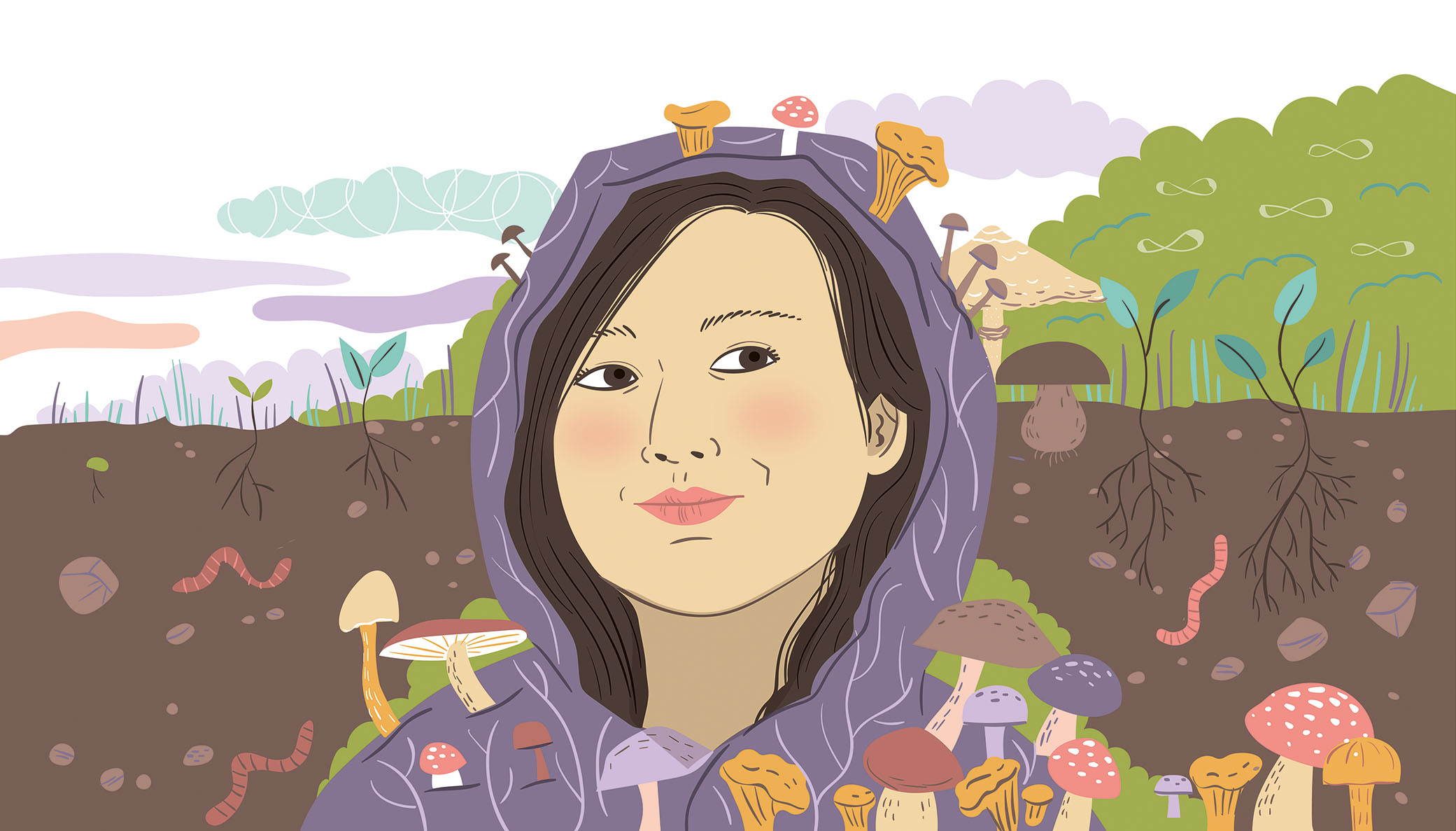
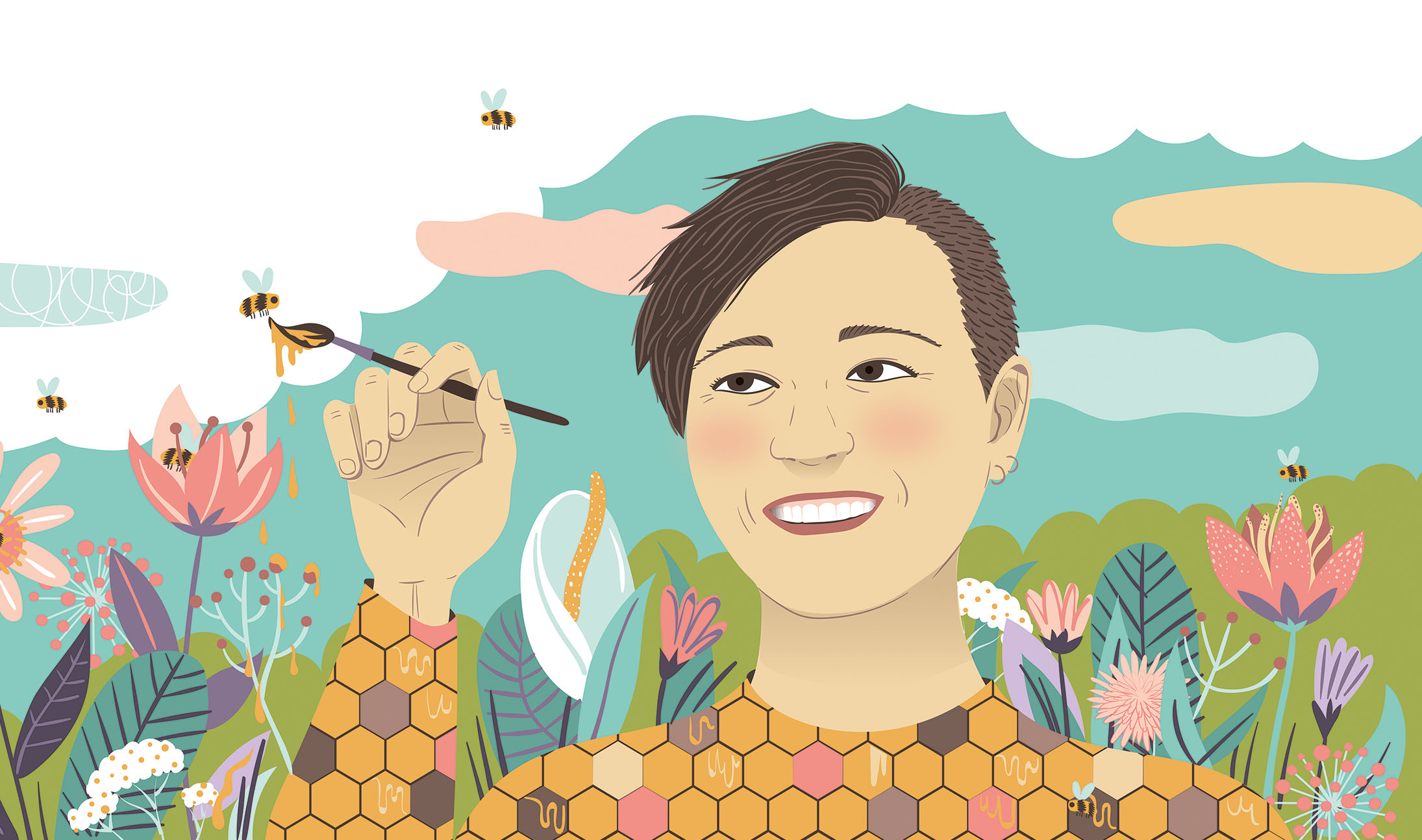

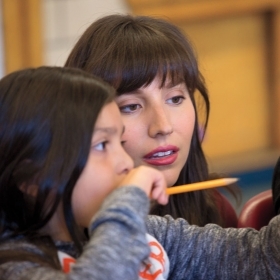
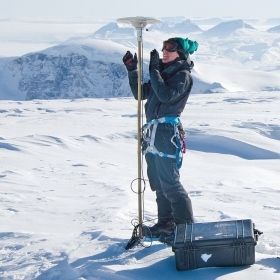
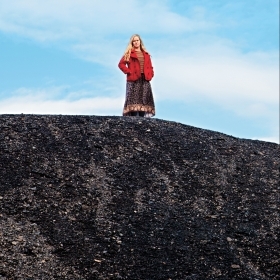
We ask that those who engage in Wellesley magazine's online community act with honesty, integrity, and respect. (Remember the honor code, alums?) We reserve the right to remove comments by impersonators or comments that are not civil and relevant to the subject at hand. By posting here, you are permitting Wellesley magazine to edit and republish your comment in all media. Please remember that all posts are public.